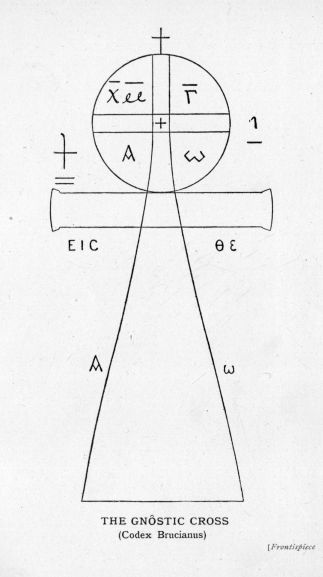
Reading 4 2 14, The Alchemical Tarot Renewed by Robert M Place
Position 1 Hanged Man, air, beginning…
Position 2 The Magus, reversed. Fire. changing. maturing
Position 3, the Queen of Vessels, Water of Water, Goddess as grail bearer of the Ocean
Position 4 9 swords, Air, destruction, cutting, moon, sex, completion not quite complete
Position 5 The High Priestess, Sophia, Lifter of the Veil, Bearer of Gnosis, Shekinah, Her of the heavens.
Tarot is an interesting thing. It works on many levels and in many ways. Some even view it as the perfect window into the soul. I don’t believe they are that good, personally…One large aspect of modern Tarot is the Hermetic traditions. The Hermetic traditions center around a form of Gnosticism (see the passages of the Corpus Hermeticum in comparison to Sethian for example cosmological beliefs etc.) centering around a divine priest in the Melchizadeck tradition honoring all priests, but from Thoth. Thoth the A Egyptian God, to Thoth the Atlantean. To a more familiar Hermes and Mercury. As an archetype for all priests the Hermetic tradition then is an interesting one. By archetype we mean more Platonic archetype and not Jungian.
One key principle or more accurately axiom of Hermeticism is “As above, So below.” The concept of macro and microcosm. The universe in miniature and in full expanse, the self and the Self. Hermeticism textually goes back around 2000 years, or approx. 1st Cent CE. Of course all text documents, of such nature are often far older than their written equivalents, oral tradition can date things… but that’s an argument for another time.
Tarot then can be seen through this lens of the Hermetic Axiom. We can see the court cards and number cards as the Microcosm, or the self. The trumps then can be seen as the Macrocosm. The Macrocosm of course can be seen as the Nous or divine mind, the mind of the divine.
The above reading is interesting in that it is composed of three potent Macrocosmic images and two Microcosmic images.
Nous: “Mind”, The soul, not the same as ‘pneuma’ or spirit. It is the part of
the anima that gives us consciousness. The anima as a whole gives life (or
literally movement.. “animates”) to our bodies. Tatian declares the soul as a
special kind of spirit. (See; Tatian’s “Letter to the Greeks’)
Ogdoad: Regarded in some texts as the “eighth kingdom above the hebdomas.” It is the realm of the Demiurgos (or sometimes that is the 7th, with the eighth being that of Sabaoth), as well as usually being the realm of the zodiac
(dodecon). Sometimes it is also seen as the beginning of freedom from the
Archons, and the beginning of connection to the Aeons. Pythagoris says…
“The ogdoad–8–was sacred because it was the number of the first cube, which
form had eight corners, and was the only evenly-even number under 10
(1-2-4-8-4-2-1). Thus, the 8 is divided into two 4’s, each 4 is divided into two
2’s, and each 2 is divided into two 1’s, thereby reestablishing the monad. Among
the keywords of the ogdoad are love, counsel, prudence, law, and convenience.
Among the divinities partaking of its nature were Panarmonia, Rhea, Cibele,
Cadmæa, Dindymene, Orcia, Neptune, Themis, and Euterpe (a Muse).” (Thomas
Taylor’s Theoretic Arithmetic, Thought by one source to be the rarest and most
important compilation of Pythagorean mathematical fragments extant.)
”… the Ogdoad, which is the eighth, and that we might receive that place of
salvation.” (”The Testimony of Truth.” See also; ”A Valentinian
Exposition.”) ) The Sacred ogdoad according to some sources is: Barbelo (deep), Sige (silence), Nous (mind), Veritus (truth), Sermo (word), Vita (life), Homo (man), Ecclesia (church). The last member of the group acts to syncretize the group.
Rba , Rabai – elect priest, chief intator and the ordainer of new Mandaean priests. Holds the office known as rabuta. Compare to the Jewish “rabbi”.
Seth: ”From Adam three natures were begotten. The first was the irrational, which was Cain’s, the second the rational and just, which was Abel’s, the third the spiritual, which was Seth’s. Now that which is earthly is “according to the image,” that which is psychical according to the ” likeness ” of God, and that
which is spiritual is according to the real nature; and with reference to these three, without the other children of Adam, it was said, “This is the book of the generation of men.” And because Seth was spiritual he neither tends flocks nor tills the soil but produces a child, as spiritual things do. And him, who “hoped
to call upon the name of the Lord” who looked upward and whose “citizenship is in heaven – him the world does not contain.” (Theodotus, Criddle Collection.)
Sethian: It is a name for a specific sect of Gnostics, but also a category created by scholars to refer to a number of sects that are related to Valentinians. The Sethians as a group were known to Hippolytus who dedicated Book Five in his work, ”The Refutation of All Hereseys,” to denouncing them. (See Gaffney) Seth was a character of Gnosticism who represented a savior figure and third son of Adam, founder of the Gnostic race. Generally Sethian works include, “Pistis Sophia,” “Allogenes,” ”The Gospel of Mary,*” “Sentences of Sextus,” “Marsanes,” “Gospel of The Egyptians,*” ”The Apocalypse of Adam,*”
“Origin of The World,” ”The Gospel of Thomas,*” ”The Gospel of Philip,” “The Three Steles of Seth,” “Melchizidek,” ”The Apocryphon of John,” ”The Gospel of Judas,” Trimorphic Protennoia,” the un-named text in the Bruce Codex, and ”Zostrianos.” (Others) Some Sethian works suggest strong ties with
Jewish Gnosticism, as well as Platonic thought, as well as Zoroasterism. (They maintained three principles; darkness below, light above, and spirit in-between, according to work attributed to Dr. Roy Blizzard, University of Texas. See also; ”Sethian Gnosticism, A Literary History,” Turner) see also;
http://en.wikipedia.org/wiki/Sethian ( * Indicates works from the Nag Hammadi Lib., with other works by the same name.)
Sethian Monadology: The system of the monad, constructed through the tetraktys
of the decad, which serves as an underlying philosophy in Sethian Gnosticism. It
is developed from the creation myths. The system is like, and based upon that
of Pythagoreans, and resembles the principles of the ancient Chinese philosophy
of the Tai Chi., which is based upon the ogdoad. The system is based upon
working variations of numerical values. Turner states, ”….vigorous
arithmological speculation on the first ten numbers, but especially the first
four numbers, comprising the Pythagorean tetraktys (the {mode} of the first four
numbers). This was carried on by such Pythagoreanizing Platonists as Theon of
Smyrna and Nicomachus of Gerasa, who in turn depend in part on similar
arithmological and mathematical theories produced by such early first century
Platonist figures as Dercyllides, Adrastos of Aphrodisias (a Peripatetic
commentator on Plato’s Timaeus) and Thrasyllos, a court philosopher under the
Emperor Tiberius. The harmonic ratios produced by these first four numbers and
the geometric entities of point, line, surface, and solid had been applied to
the structure and the creation of the world soul long before by Plato and his
successors in the Old Academy, especially Speusippus and Xenocrates. (See;
Turner, See also; ”The History of Chinese Philosophy, Vol. 2.,” by Fung
Yu-Lan, Princeton, 1953, See also; ”A Valentinian Exposition.”)
….
The Sufi mystic Ibn al-Arabi drew a diagram similar to the one used to develop a pattern around a khatam (see above). However, Al-Arabi’s diagram’s diagram is concerned with spirituality, not ornamentation. He drew it as part of his explanation that “all phenomena are nothing but manifestations of Being, which is one with God.” Conincidentally, Al-Arabi was born in Spain at around the same time the practice of zillij, mosaic design, was starting to flourish. As Sufism had particular appeal to North Africa, his spirtual use of the pattern may explain the prolific use of the eight-point star and and symetries of eight in Moroccan Islamic patterns.

The number eight was important among Sufi mystics. “The octagon, with a ninth point in the center, is also central to the mystical symbology of Sufism. It is the seal or design which Ernest Scott says ‘reaches for the innermost secrets of man’. Meaning wholeness, power and perfection, this primary geometrical symbol is one which Sufis associate with Shambhala …”
| On his website of natural patterns, Ian Alexander refers to the eight-point star as both the Sufi star and the Moroccan star. He offers the following explanation, as quoted from Friday mosque in Iran “Form is symbolised by the square. Expansion is symbolised by the square with triangles pointing outwards (an 8-pointed star). Contraction is symbolised by the square with triangles pointing inwards (a 4-pointed star). The two star-shapes together symbolise the cycle of creation, ‘the breath of the compassionate.’” |
















